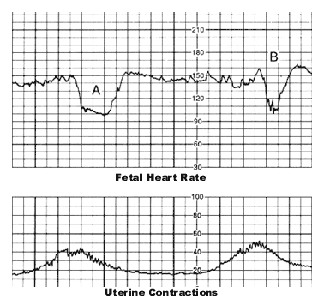
Although the term used to monitor fetal well being is electronic fetal monitoring, the monitors currently used measure two distinct parameters. The first is fetal heart rate, but equally important is the second, the pattern of uterine contractions. The term cardiotocograph may more accurately describe the devices in use today.
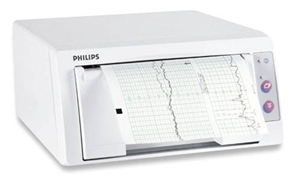
As mentioned above, fetal monitors look at both fetal heart rate and uterine contractions. Fetal heart rate may be measured with an external monitoring device or an internal one. Both of these transmit a signal to a console where the patterns are printed on a graph or transmitted to a video screen running at a rate of 3 cm /minute. The display is a two channel display where the top channel is the fetal heart rate is displayed in beats per minute and the bottom channel is the uterine contraction pattern coinciding with the displayed fetal cardiac activity.
External Fetal Monitor
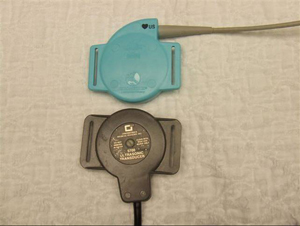
Doppler Transducer
The external fetal monitor consists of a Doppler ultrasound transducer that both emits and receives a signal from fetal cardiac activity. This signal is converted via computer processing into a fetal heart rate tracing. External monitors are used when the membranes are intact and cannot or should not be ruptured. They are also used in situations when puncture of fetal skin is contraindicated when vertical transmission of infection is a concern (e.g. HIV, hepatitis C, and herpes simplex). They are attached to the maternal abdomen via a belt at a location where fetal cardiac signals are at their optimum for pickup.

Belts in Place
Internal Fetal Monitor

Fetal Scalp Electrode
When a higher quality signal is desired it may be necessary to place in internal monitor. Conditions where this may occur include obese patients, premature fetuses, or when there is excessive maternal or fetal movement. The internal monitor consists of a spiral electrode that is gently screwed superficially into the fetal scalp. The electrical signal is sent to the console where a signal processor converts the R-R interval of the fetal ECG to a fetal heart rate and displays it as a tracing in beats per minute.
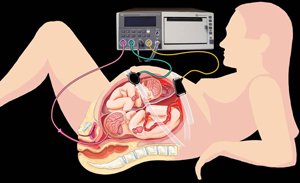
External and Internal Monitors
Tocodynamometer
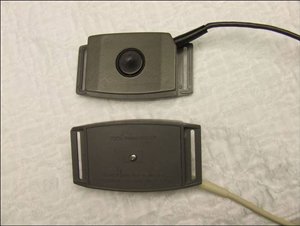
Toco Transducer
The second component of a fetal monitor is the tocodynamometer. This device measures the relative strength, rate, and duration of uterine contractions. It is basically a ring-style pressure transducer attached to the maternal abdomen via a belt that maintains tight continuous contact with the abdomen. The transducer contains a plunger that is depressed when the uterus changes its rigidity and shape with each contraction. This depression changes the voltage of the current associated with the plunger and is proportional to the strength of the contraction. While the transducer can monitor the activity of the uterus (frequency and relative strength of contraction), it cannot determine the absolute intrauterine pressure. The sensitivity of the transducer is affected by factors such as maternal obesity and premature gestational age and therefore the duration of the contraction may vary depending on that sensitivity. Its advantages are that it is non-invasive and can be used when membranes are intact. An internal uterine pressure transducer is also available if more accurate measurements of uterine activity are desired. This consists of a catheter with a built-in strain gauge that is inserted transcervically after membranes are ruptured. It is easier to use and requires less nursing attention.
The goal of monitoring is to maintain adequate, accurate, and continuous fetal cardiac heart rate and uterine activity while ensuring maternal comfort.
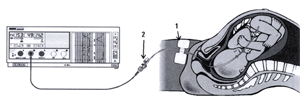
Intrauterine Pressure Catheter
While external devices are less invasive, they may not be as accurate. When more accurate assessment of fetal heart rate and contraction pattern is desired, internal monitoring may be indicated.